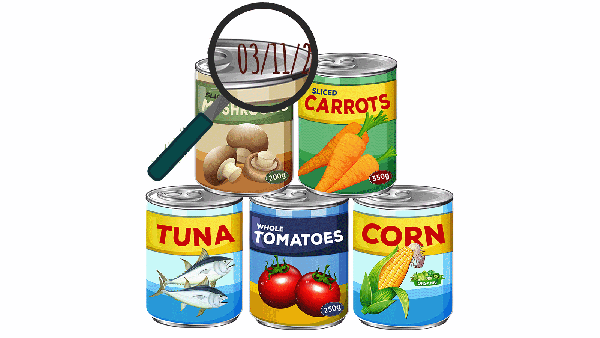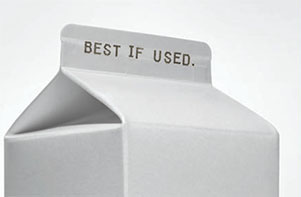This page contains affiliate links which support SalvageFood.org, a 501(c)(3) nonprofit, if you make a purchase.

Food Product Dating
USDA estimates that 30 percent of the food supply is lost or wasted at the retail and consumer levels. One source of food waste arises from consumers or retailers throwing away wholesome food because of confusion about the meaning of dates displayed on the label.
One source of food waste arises from consumers or retailers throwing away wholesome food because of confusion about the meaning of dates displayed on the label.
To reduce consumer confusion and wasted food, the Food Safety and Inspection Service recommends that food manufacturers and retailers that apply product dating use a “Best if Used By” date. Research shows that this phrase conveys to consumers that the product will be of best quality if used by the calendar date shown. Foods not exhibiting signs of spoilage should be wholesome and may be sold, purchased, donated and consumed beyond the labeled “Best if Used By” date.
Foods not exhibiting signs of spoilage should be wholesome and may be sold, purchased, donated and consumed beyond the labeled “Best if Used By” date.
With the exception of infant formula, product dating is not required by Federal regulations.
For meat, poultry, and egg products under the jurisdiction of the Food Safety and Inspection Service (FSIS), dates may be voluntarily applied provided they are labeled in a manner that is truthful and not misleading and in compliance with FSIS regulations. To comply, a calendar date must express both the month and day of the month. In the case of shelf-stable and frozen products, the year must also be displayed. Additionally, immediately adjacent to the date must be a phrase explaining the meaning of that date such as “Best if Used By.”
With an exception of infant formula, if the date passes during home storage, a product should still be safe and wholesome if handled properly until the time at which spoilage is evident. Spoiled foods will develop an off odor, flavor or texture due to naturally occurring spoilage bacteria. If a food has developed such spoilage characteristics, it should not be eaten.
Can codes are a type of closed dating which enable the tracking of product in interstate commerce. These codes also enable manufacturers to rotate their stock and locate their products in the event of a recall.
Can codes appear as a series of letters and/or numbers and refer to the date the product was canned. The codes are not meant for the consumer to interpret as a “Best if Used By” date.
Cans must exhibit a code or the date of canning. Cans may also display “open” or calendar dates. Usually these are “Best if Used By” dates for peak quality. Discard cans that are dented, rusted, or swollen. High-acid canned foods (e.g. tomatoes and fruits) will keep their best quality for 12 to 18 months. Low-acid canned foods (e.g. meats and vegetables) will keep for two to five years.
Examples of commonly used phrases:
| Best if Used By/Before | Indicates when a product will be of best flavor or quality. It is not a purchase or safety date. Foods not exhibiting signs of spoilage should be wholesome and may be sold, purchased, donated and consumed beyond the labeled "Best if Used By" date. |
| Sell-By | Tells the store how long to display the product for sale for inventory management. It is not a safety date. |
| Use-By | The last date recommended for the use of the product while at peak quality. It is not a safety date. |
| Freeze-By | Indicates when a product should be frozen to maintain peak quality. It is not a purchase or safety date. |
 |


